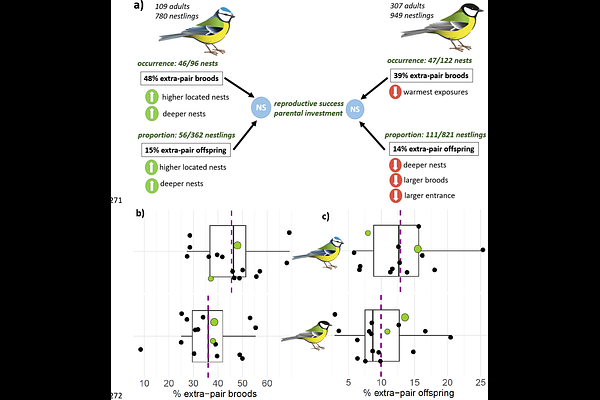Avian promiscuity in the last European primeval forest

Avian promiscuity in the last European primeval forest
Sudyka, J.; Di Lecce, I.; Hebda, G.; Rowinski, P.; Rutkowski, R.; Szczuka, A.; Perrier, C.; Cholewa, M.; Maziarz, M.; Wesołowski, T.; Szulkin, M.
AbstractPrimeval forests provide a reference baseline to understand the origins and evolution of mating systems because they offer a unique, undisturbed environment where ecological interactions and natural selection play out in their original context. We established rates of extra-pair paternity (EPP) for two bird species referential to evolutionary ecology: blue tits (Cyanistes caeruleus) and great tits (Parus major), breeding in natural cavities in Biaowie[z]a National Park, the sole remnant of European lowland primeval forests. Genotype-by-sequencing of 889 blue tits and 1,256 great tits revealed that 48% of blue tit broods and 39% great tit broods were of mixed paternity, with 15% blue tit and 14% great tit nestlings not sired by their social father. These referential levels align with median values of EPP reported in nestbox studies in secondary and managed forests, suggesting that certain reproductive strategies are advantageous across diverse environments. Observed promiscuity levels did not affect reproductive success or parental investment, indicating no or limited adaptive value for promiscuity in the context of a primeval forest ecosystem. Our study underscores how primeval habitats provide unparalleled insights into natural selection and mating strategies in wild populations, highlighting the stability and resilience of these strategies across different environmental contexts.